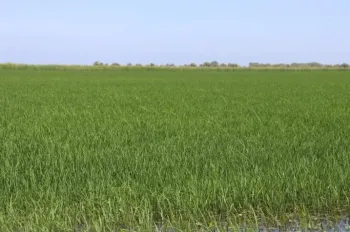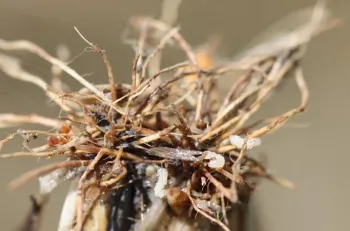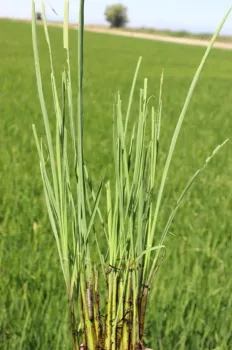I have seen several issues with arthropods and diseases so far this year. Here’s a quick rundown:

Bakanae: Like in previous years, there have been several fields with heavy Bakanae infections. While the number of plants infected is high, I don’t think any of those fields are going to experience a yield reduction due to Bakanae. What is concerning is that seed of most of these fields was treated with bleach. I suspect the issue is that the concentration of the soak water may not have been enough to clean up the Bakanae spores. I do not think this is related to one variety being more susceptible than others (see this blog post where I go over the possible reasons why we are seeing more Bakanae). In any case, it is concerning to continue to see Bakanae in the increase.

Rice water weevil: This issue was observed in our no till, drill-seeded rice site at the Rice Experiment Station. Typically, rice water weevil is not a problem at the Station. I have not seen high populations there in more than a decade. Plants looked stunted and inspection of roots showed rice water weevil larvae. Because these are small basins, the infestation was observed through the basin, but was worse near levees. Also, areas with low N and that had herbicide injury seemed to be more affected. I have not seen or heard of rice water weevil problems in commercial fields.

Armyworms: Worm pressure this year was higher than the past 2 or 3 years, but we did not reach outbreak levels. However, in some fields number of worms went over 10 per square foot with defoliation approaching the threshold of 25%. I am conducting an insecticide trial in a field with good worm pressure. So far, we have confirmed what we have seen in the past: pyrethroids don’t work; Intrepid and Dimilin are good options, though Dimilin acts slower than Intrepid; Bt products have limited efficacy. Chlorantraniliprole, an active ingredient that may be available in upcoming years, was as good as Intrepid.
Rice seed midge: I have seen a couple of fields where it seems that stand was affected by rice seed midge. One was not treated with a pyrethroid, the other was. Even though rice seed midge is not a huge problem, every year a few fields get affected, especially fields that are planted late. An effective insecticide is needed to manage this pest.
What is coming next: blast, stem rot, armyworms at heading, kernel smut.
- Keep an eye out for blast. If leaf blast is detected, apply azoxystrobin at late boot/early heading.
- You can check the level of stem rot in your field at boot. If more than 50% of a sample of tillers show stem rot lesions, you may want to consider a fungicide application at late boot/early heading.
- The fact that we had heavy armyworms during vegetative growth does not necessarily mean we will have them at heading. In past trials we have seen that fields that are treated with Intrepid have less injury to panicles during heading.
- Kernel smut is a gamble. Will we see it? No one knows. At this point, if the field has a history of kernel smut, and a very susceptible variety is being grown (M-209, L-206, L-207, CJ-201), you may want to consider using propiconazole at mid boot. But remember, all our varieties are susceptible.

